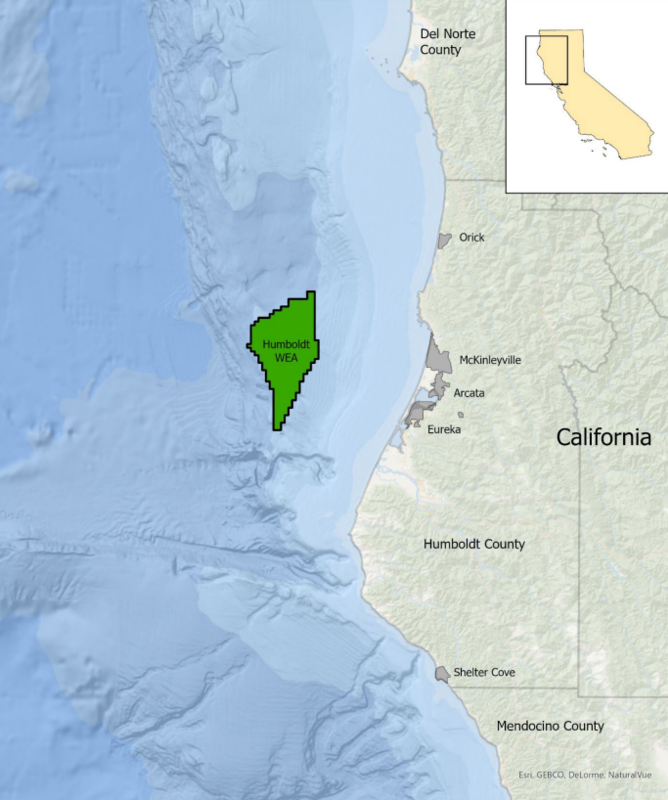US Government Agency greenlights deep water turbine installations off California coast

Credit: BOEM
The US Bureau of Ocean Energy Management (BOEM) has declared that the Humboldt
Wind Energy Area, located 20 miles off California, will have “no significant impact” on the
local ecosystems.
The BOEM assessment covers an area of US waters of about 535.6km 2 , off Humboldt
County California, which if fully developed, could yield some 1.6GW of energy, or 5% of the
30GW the US is currently planning to have installed by 2030.
BOEM’s decision opens the door not only to the Humboldt installation itself, but the principle
of west-coast deep water offshore turbine installations. Here, as opposed to the east coast,
the continental shelf drops off very sharply, not very far from the shoreline, precluding the
installation of turbine foundations on the seabed. At time of writing, BOEM is considering the
Morro Bay Wind Energy Area, also located 20 miles off California.
On the Atlantic side, work has already begun; DEME and Van Oord have entered the market
with a bang, and are in the process of negotiating the intricacies of this nascent market. But
the US’ National Renewable Energy Laboratory (NREL) calculates that there may be as
much as 58% of North America’s offshore wind energy capacity locked up in the deep
waters off the Pacific coast.
In particular, the Jones Act prevents turbines from being launched on European wind turbine
installation vessels (WTIVs), because the Act stipulates that American-built ships, crewed by
American seafarers, must be the ones to carry the turbines offshore.
A small number of all-American WTIVs are under construction, but US yards will not be able
to build them quickly enough to serve all of the demand. Instead, several companies are
constructing special feeder vessels, which would carry the turbines out to European WTIVs
to make up for the shortfall. On the west coast however, installations are likely to be very
different. Here, turbines are expected to be mounted on floating semi-submersible platforms
which will be towed out to sea and anchored.
“The completion of this Environmental Assessment represents an important step forward for
ensuring that any future renewable energy development – should a lease sale occur – is
done in a responsible manner,” said BOEM director Amanda Lefton. “Working closely with
Tribes, state and federal partners and key stakeholders, BOEM remains focused on
ensuring that such development is done in a way that avoids or reduces potential impacts to
the environment and other ocean users in the region.”
While the advice given in this editorial content has been developed using the best information available, it is intended purely as guidance to be used at the user’s own risk. No responsibility is accepted by CEDA or by the Intent Communications Ltd or by any person, firm, corporation or organisation who or which has been in any way concerned with the furnishing of information or data, the compilation, publication or any translation, supply or sale of this Guidance for the accuracy of any information or advice given herein or for any omission herefrom or from any consequences whatsoever resulting directly or indirectly from compliance with or adoption of guidance contained therein even if caused by a failure to exercise reasonable care.